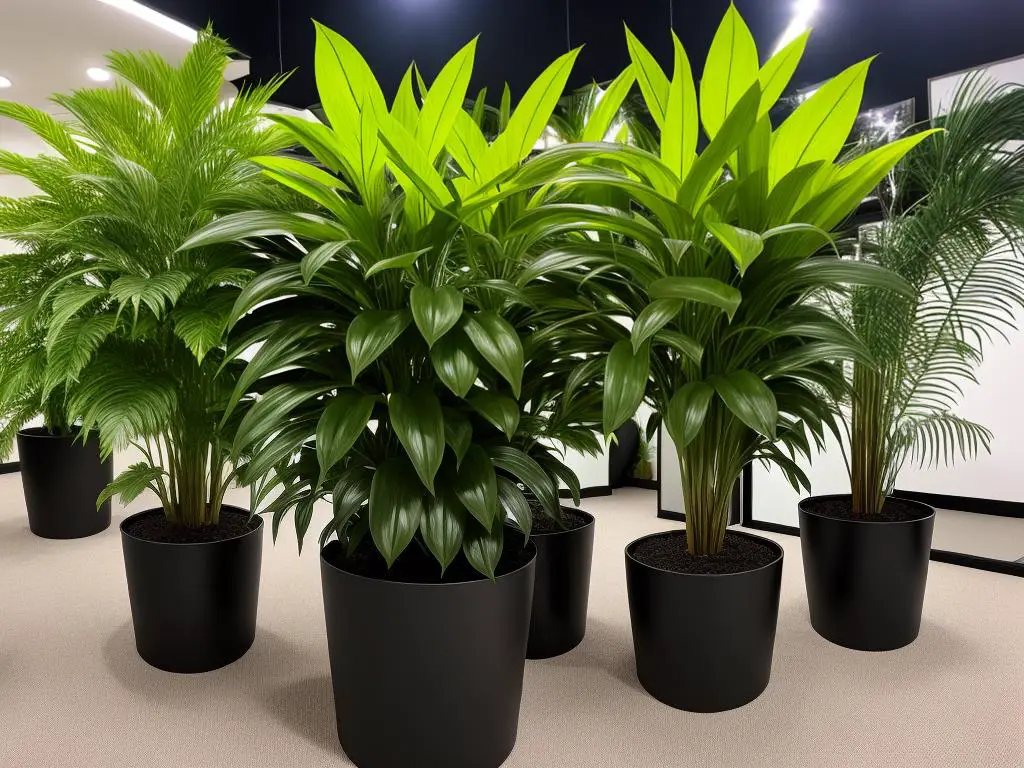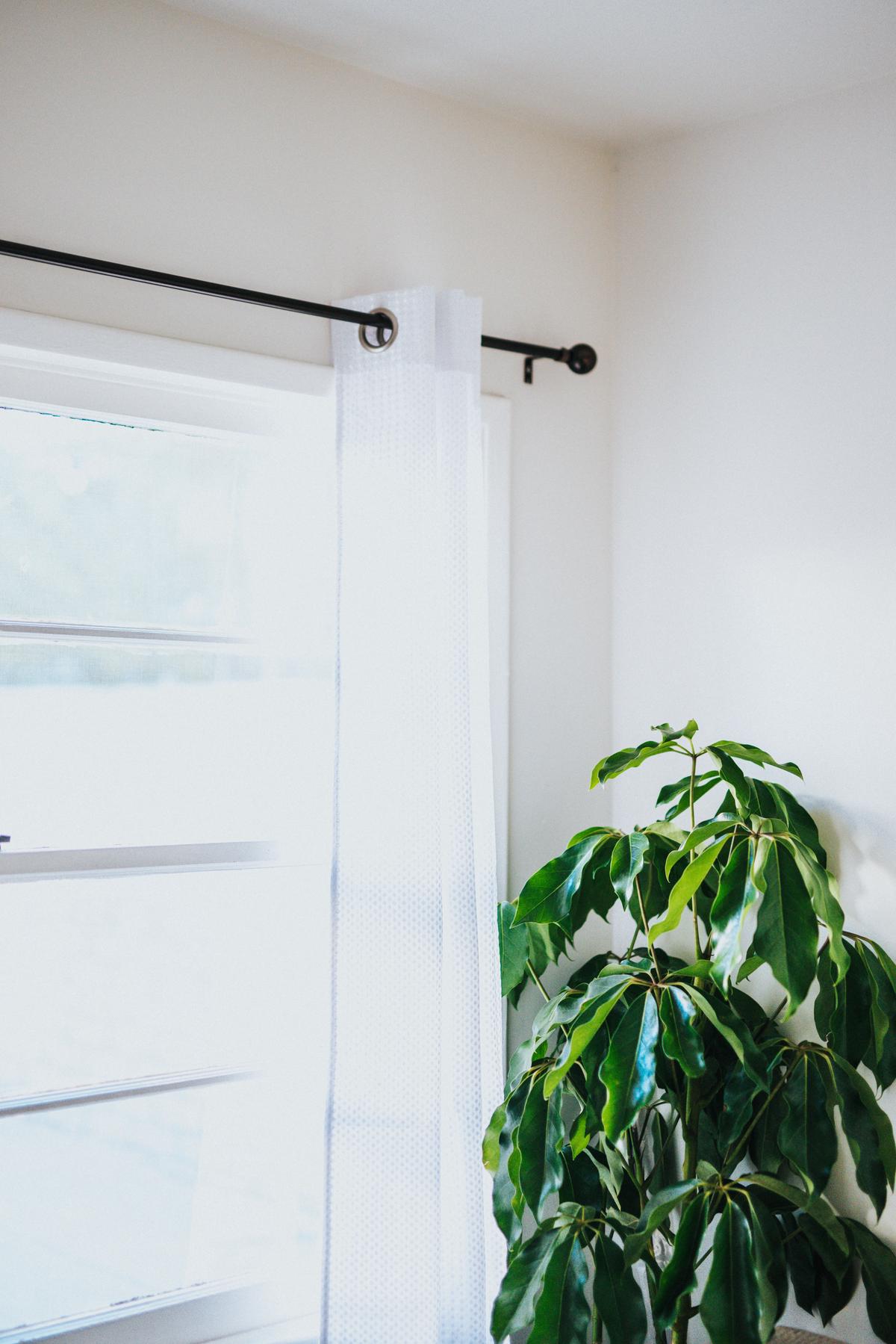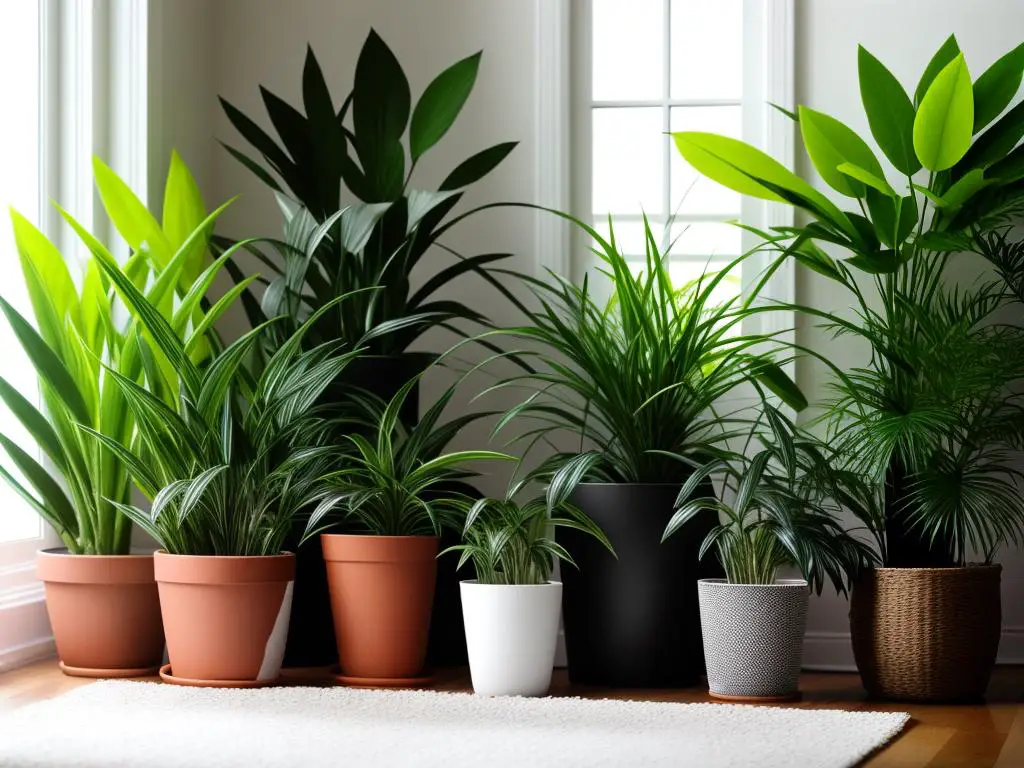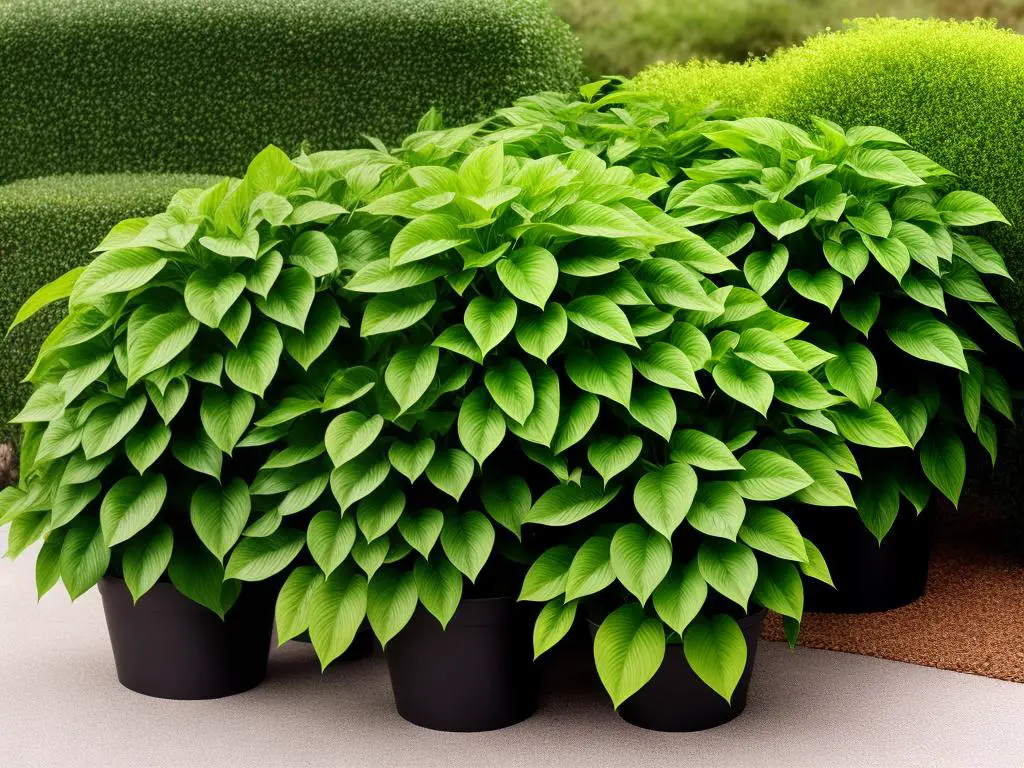As we explore the verdant realms of home gardening, an often overlooked aspect is the potential toxicity of certain unwary houseplants that, while beautifully enchancing our spaces, can also pose hidden threats. Given our innate desire to surround ourselves with fascinating flora, this presents an important subject matter. Aimed at young adults eager to develop an intermediate understanding of poisonous houseplants, this piece unveils a comprehensive overview of common toxic species, their identification, symptoms caused by their contact or ingestion, along with precautionary measures for their safe handling. Lastly, it opens up a discussion on safer alternatives, ensuring that gardening remains a joyous hobby rather than an unsuspecting hazard.
Identification of Common Poisonous Houseplants
Understanding Poisonous Houseplants
When it comes to creating a serene and aesthetically pleasing interior space, houseplants can be an effective solution. However, some commonly adopted houseplants can pose a threat to the wellbeing of humans and pets if ingested or sometimes merely touched. It is crucial to be aware of such plants, their properties, and identifying features.
Dieffenbachia or Dumb Cane
Dieffenbachia, commonly known as Dumb Cane, is a common houseplant that is unfortunately also on the list of poisonous plants. Its scientific name is Dieffenbachia seguine. This plant is attractive due to its range of leaf colourations from green and white to yellow. Though a sight to behold, the plant contains oxalates that can cause severe mouth and throat irritation upon ingestion. When in contact with the skin, it can cause dermatitis or skin rash.
Spathiphyllum or Peace Lily
The Peace Lily, scientifically named Spathiphyllum spp., is widely used in homes and offices for its elegance and air purifying properties. The plant is, however, toxic, containing calcium oxalate crystals that can cause stinging and burning sensations in the mouth, difficulty swallowing, and nausea if ingested. Touching the plant can potentially cause skin irritation as well.
Philodendron
Philodendron is a vast genus of flowering plants known for their large, often heart-shaped leaves. Various species like Philodendron bipinnatifidum and Philodendron cordatum are desirable due to their appearance and air-cleaning attributes. But these are toxic plants, and ingestion or skin contact can cause similar symptoms to the Peace Lily due to the presence of calcium oxalate crystals.
Zantedeschia or Calla Lily
The Calla Lily, known scientifically as Zantedeschia aethiopica, is renowned for its stunning, trumpet-shaped flowers and glossy foliage. Despite its beauty, it is highly toxic. The toxicity stems from the calcium oxalate crystals in the plant. Ingesting any part of it can lead to an intense burning sensation, succulent lips, tongue, and throat swelling, leading to difficulty speaking or swallowing.
Cycas Revoluta or Sago Palm
Not only visually appealing with its feathery foliage and central trunk, but the Sago Palm (Cycas Revoluta) is also effectively hardy and easy to maintain. Unbeknown to many, all parts of the Sago Palm, especially the seeds, are highly toxic. It contains cycasin, a toxin that can cause vomiting, jaundice, increased thirst, haemorrhagic gastroenteritis, bruising, coagulopathy, liver damage, and even death upon ingestion.
Plants such as the Poinsettia (Euphorbia pulcherrima), Snake Plant (Sansevieria trifasciata), and the Devil’s Ivy (Epipremnum aureum) are just a few examples of common poisonous houseplants. Beautifying your surroundings with these plants can be appealing, yet it’s crucial to be aware of their nature and keep them safely away from children and pets.

Symptoms of Poisoning from Contact or Ingestion
The Importance of Knowing About Poisonous Houseplants
Houseplants that harbour poisonous qualities may be attractive and earn you many compliments, but they also carry harmful toxins that can lead to serious health complications. Many of these plants are strikingly beautiful, but the risk they pose through exposure or ingestion can result in mild to severe symptoms of poisoning. That’s why understanding these risks is so vital, especially in homes with children or pets.
Telltale Symptoms of Poisoning
Though varied, symptoms resulting from exposure to poisonous houseplants are often noticeable. Some of the most common signs of poisoning involve the skin, manifesting in forms like rashes, itching, redness, or burns. The skin may feel unusually warm to touch or might witness an outbreak of blisters. Particularly in situations where the plant substance comes in perpetual contact with human skin, it can cause dermatitis, characterised by swollen, red, itchy skin.
Gastrointestinal symptoms are exceedingly common upon ingestion of a poisonous plant. These can involve a sudden onset of nausea or vomiting, stomach pain, and diarrhoea. If the plant has been ingested, it may also lead to a burning sensation in the throat, noticeable difficulty in swallowing, and excessive drooling.
Systemic symptoms might also arise, defined by fever, headache, dizziness, or a general feeling of illness. Some of the more grave symptoms can include irregular pulse, lowered blood pressure, palpitations, and in some instances, seizures, unconsciousness, or even fatalities in severe cases.
Allergic Reactions to Houseplants
Allergic reactions, while not technically considered part of the typical poisoning symptoms, can occur when one is hypersensitive to specific plants. Symptoms of allergies can range from a runny nose, congestion, and sneezing, to more severe reactions such as difficulty in breathing or a sudden drop in blood pressure. Skin allergies might manifest as itching, redness, and swelling in areas exposed to the plant substance.
Key Points
The allure of adorning home interiors with a diverse range of houseplants is indeed appealing. However, it’s exceedingly important to appreciate the potential dangers they can present. Some plants might only cause minor irritation or discomfort when touched or inadvertently eaten. However, others could introduce severe health complications needing immediate medical help. Consequently, it’s vital to scrutinise the types of houseplants appropriate for indoors, especially if you’re living with children or pets. Recognising what actions to take during cases of accidental poisoning significantly aids in mitigating the risk of severe health issues.

Photo by nate_dumlao on Unsplash
Precautionary Measures and Safe Handling
Decoding Your Houseplants: A Glimpse into Their Toxic Properties
Even the most aesthetically pleasing houseplants can harbour concealed perils within their lush leaves. It’s particularly important for those with a penchant for gardening to recognise the potential dangers associated with poisonous houseplants. This requires not only being able to identify these plants but also understanding the safety precautions and handling procedures necessary to prevent untoward incidents.
Identifying Potentially Poisonous Houseplants
In our homes and gardens, we may unknowingly accommodate various species of poisonous plants. Some common examples include varieties like Dieffenbachia (Dumb Cane), Philodendron, and Spathiphyllum (Peace Lily). These plants can cause symptoms like nausea, vomiting, difficulty swallowing, and even skin irritation if ingested or handled improperly.
Plants like the Oleander and the Foxglove, although beautiful, are highly toxic and potentially lethal if ingested. It’s crucial to be familiar with the species of plants in your home and garden, and their associated risks.
Safe Handling of Toxic Plants
While dealing with toxic plants, always ensure you take appropriate safety measures. Wear gloves to prevent skin contact, and consider eye protection if you’re handling a plant known to be particularly harmful.
Pruning or repotting such plants requires special precautions. Be mindful not to touch your face, eyes, or mouth during the process. Once the task is finished, dispose off the plant material safely and wash your hands thoroughly.
Child and Pet Safety
Children and pets are naturally curious, and may try to taste or play with these plants. Therefore, it’s of upmost importance that poisonous plants are kept out of their reach. If you suspect that your child or pet has ingested part of a toxic plant, seek immediate medical or veterinary help.
In case of children, educating them about the potential dangers can be an effective preventive measure. Discuss the perils of touching or ingesting unknown plants, making it clear that not all plants are safe.
Plants and Pets: A Special Note
Certain houseplants can be particularly harmful to pets. Plants like Lilies, for instance, can prove fatal if ingested by cats. Therefore, it’s recommended to familiarise yourself with the list of plants hazardous to specific animals if you’re a pet owner.
Also, remember that your pets might be more inclined to chew on houseplants when they’re bored or lack dietary fibres. Provide them with safe, pet-friendly plants to chew on, and make sure they’re well-engaged and fed with a balanced diet.
In case of Poisoning
If accidental poisoning does occur, ensure you can give a full account of the situation to the medical professional. This includes describing the plant consumed, the amount, and the symptoms observed. Don’t wait for the symptoms to worsen before seeking help, as immediate attention can often alleviate the situation.
Understanding the potential dangers of poisonous houseplants is crucial for a safe and harmonious relationship with your indoor greenery. Always remember – being informed gives you the power to keep yourself and others safe.

Possible Alternatives to Poisonous Plants
Considering Harmless Yet Decorative Alternatives to Toxic Houseplants
Choosing indoor plants purely for their aesthetic appeal can raise worries about their potential poisonous properties, particularly in households with inquisitive pets or small children. A number of familiar houseplants, such as the “Dumb Cane” (Dieffenbachia) or Philodendrons, contribute a desired hint of greenery but carry toxins that may inflict harm if consumed. Despite these risks warranting attention, the encouraging aspect is the availability of a broad range of alternative houseplants. These alternatives not only enliven a room but are also safe for both humans and pets.
Boston Fern (Nephrolepis exaltata)
Perhaps one of the most visually pleasing and versatile houseplants, Boston Ferns are considered safe for both pets and children. Originating from tropical regions, these ferns thrive in humid environments and indirect light. Their dense, delicate fronds can be a captivating centrepiece or a lush, cascading visual garnish on shelves. Boston Ferns are easy to look after and essentially pose no toxic threat.
Spider Plant (Chlorophytum Comosum)
Easy to care for and propagate, the Spider Plant boasts an arching display of variegated, long, slender leaves. These plants are completely harmless to animals and children and can combat toxins in the air such as formaldehyde and carbon monoxide, thereby improving overall air quality.
Parlour Palm (Chamaedorea Elegans)
For an exotic touch, why not consider the Parlour Palm? Its feathery fronds and slow growth habit make it a perfect indoor addition, thriving in indirect light and cool temperatures. With no poisonous properties, the Parlour Palm makes for a child and pet-friendly choice.
Areca Palm (Dypsis lutescens)
Another attractive palm variety, the Areca or Butterfly Palm, showcases feathery, arching fronds and is an excellent option for creating a more tropical setup. Not only is the Areca Palm non-toxic to pets and children, it is also known for its exceptional air purifying qualities.
Money Tree (Pachira Aquatica)
The Money Tree is deemed as a token of good luck and fortune but beyond these beliefs, it’s a brilliant and safe indoor plant. Thriving in indirect light and requiring moderate watering, this braided tree can add an enchanting element to a room, whilst posing no harm to little ones or pets.
Remember Care Requirements
While these alternatives can assure safety, don’t forget that each plant has distinct care requirements such as light, water, humidity, and soil variety. Knowledge of these will help abundant growth and longevity of your selected plants.
Ultimately, introducing pet-friendly and child-safe plants like these into your home can provide the aesthetic desire of greenery whilst ensuring a high level of safety. It’s about achieving the right balance of ornamental charm, plant care, and overall safety for everyone in the household.

By honing our understanding of potentially dangerous houseplants and taking active steps to handle them wisely, we can indeed maintain a safer environment. This particularly rings true for households with children and pets, where the stakes are higher. Nurturing an awareness about the nature of these plants and the symptoms they can trigger in case of accidental contact or ingestion is paramount. Furthermore, adopting non-toxic alternative houseplants can promise a safe and beautiful abode. At the end of the day, informed choices and precautions can let us enjoy the greenery without any unwarranted anxiety, making our homes an oasis of tranquillity and beauty.
